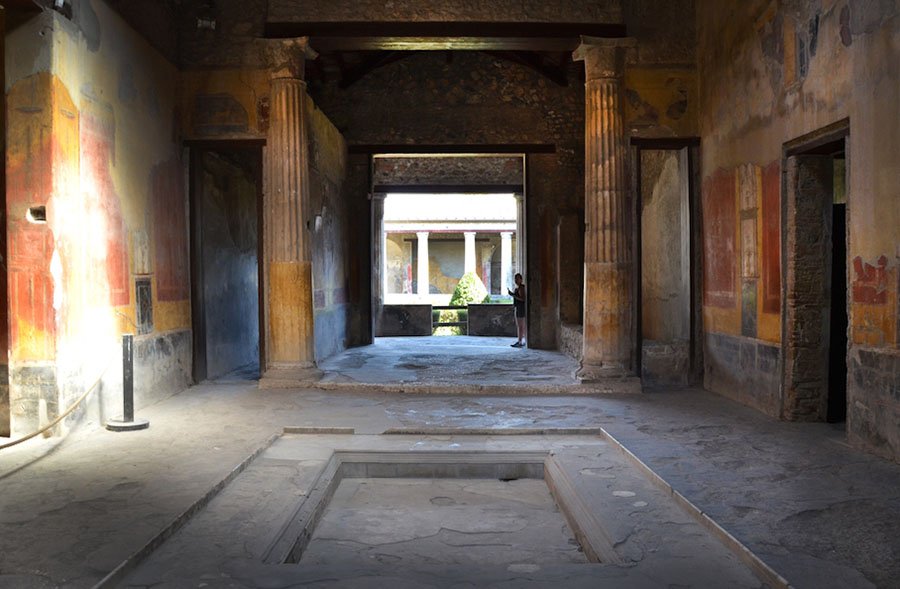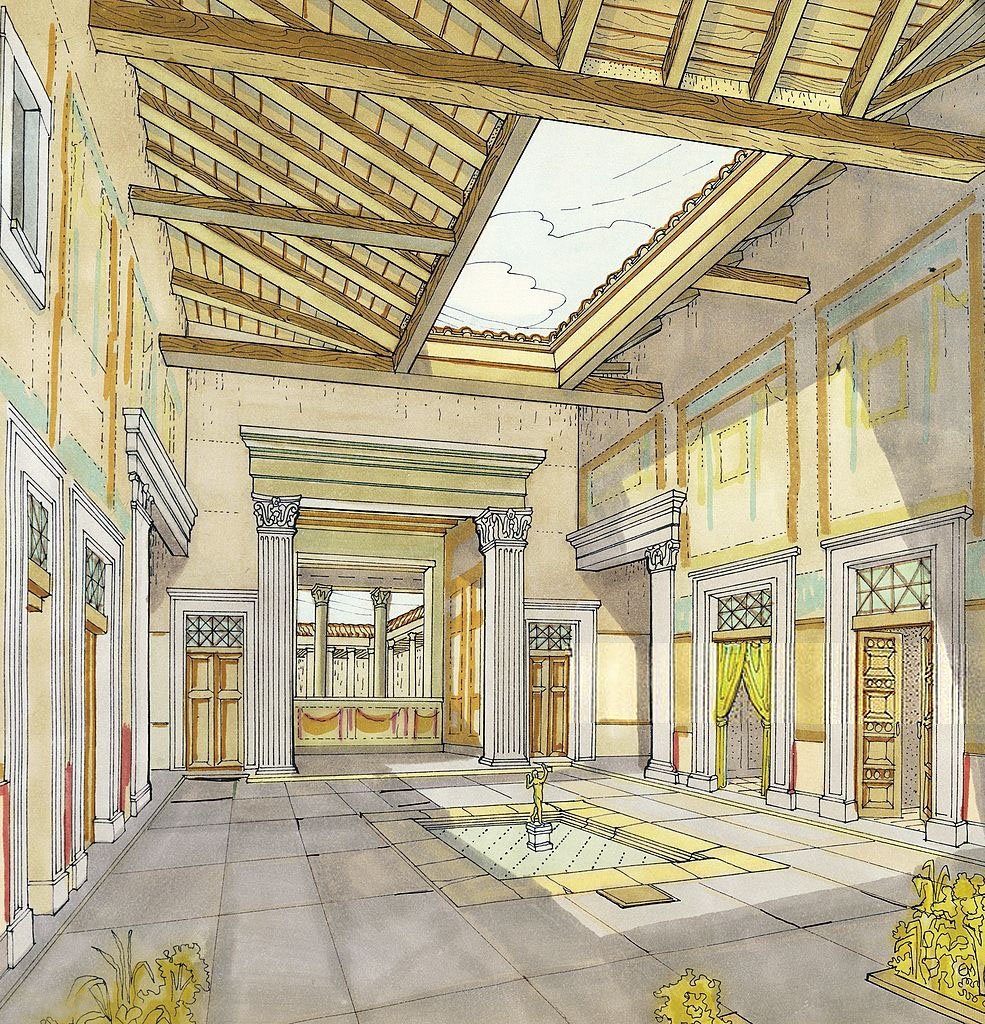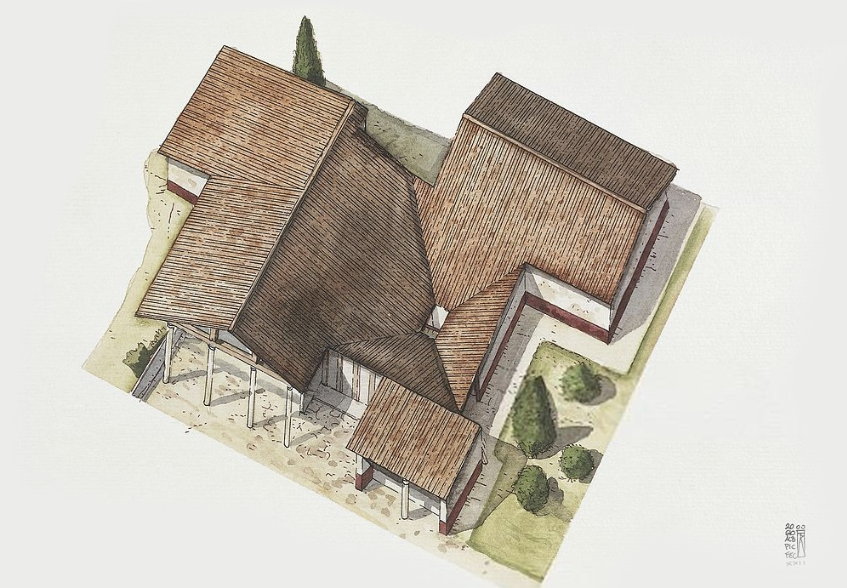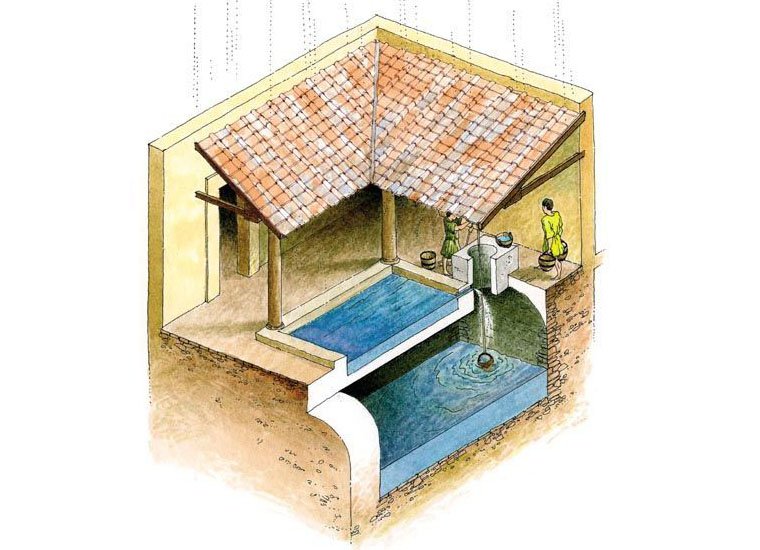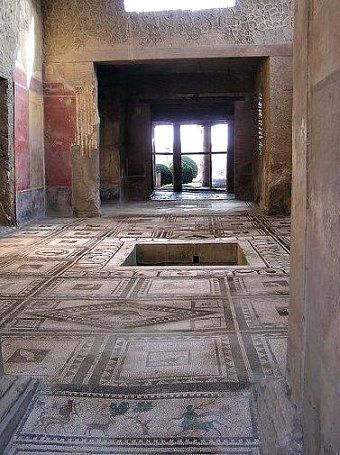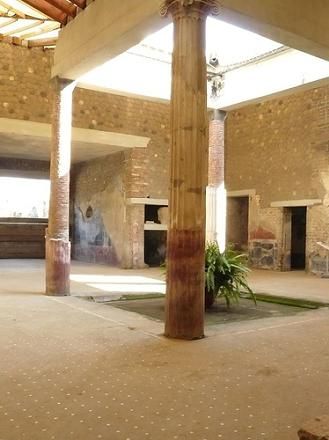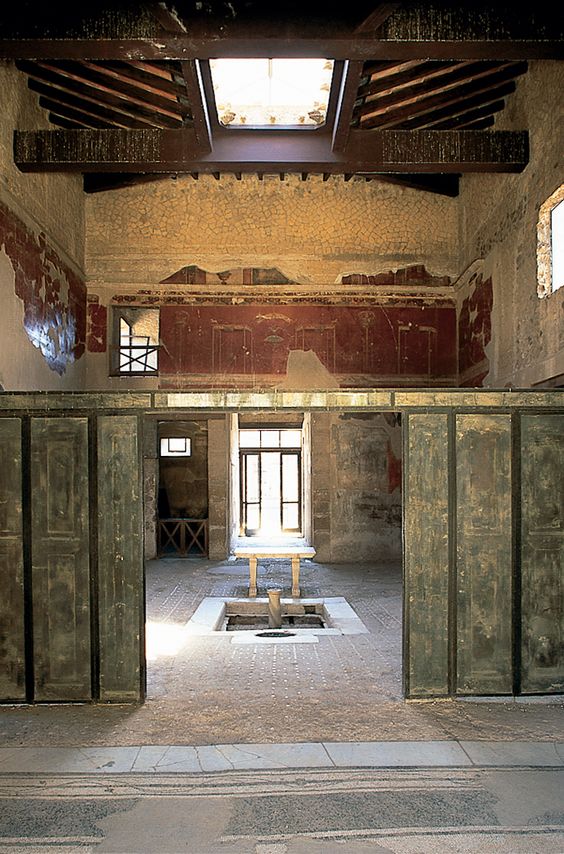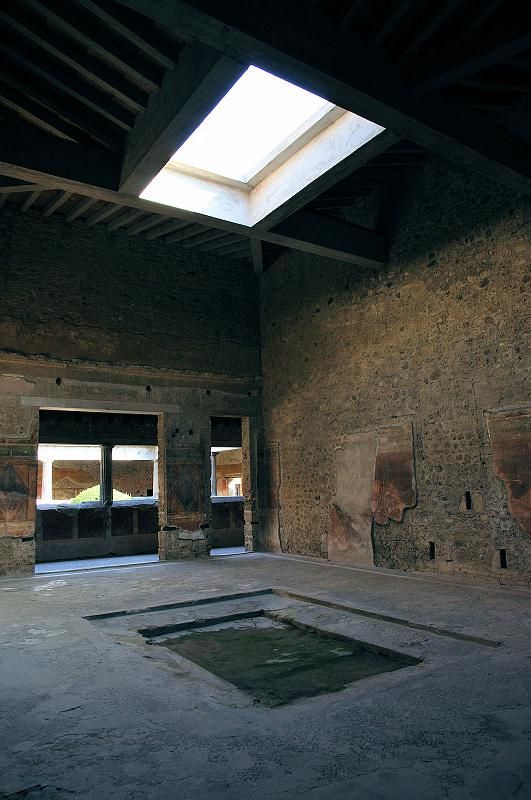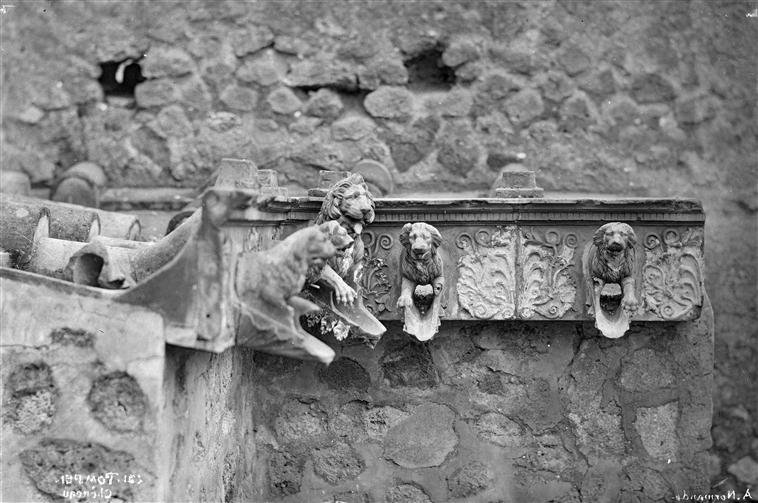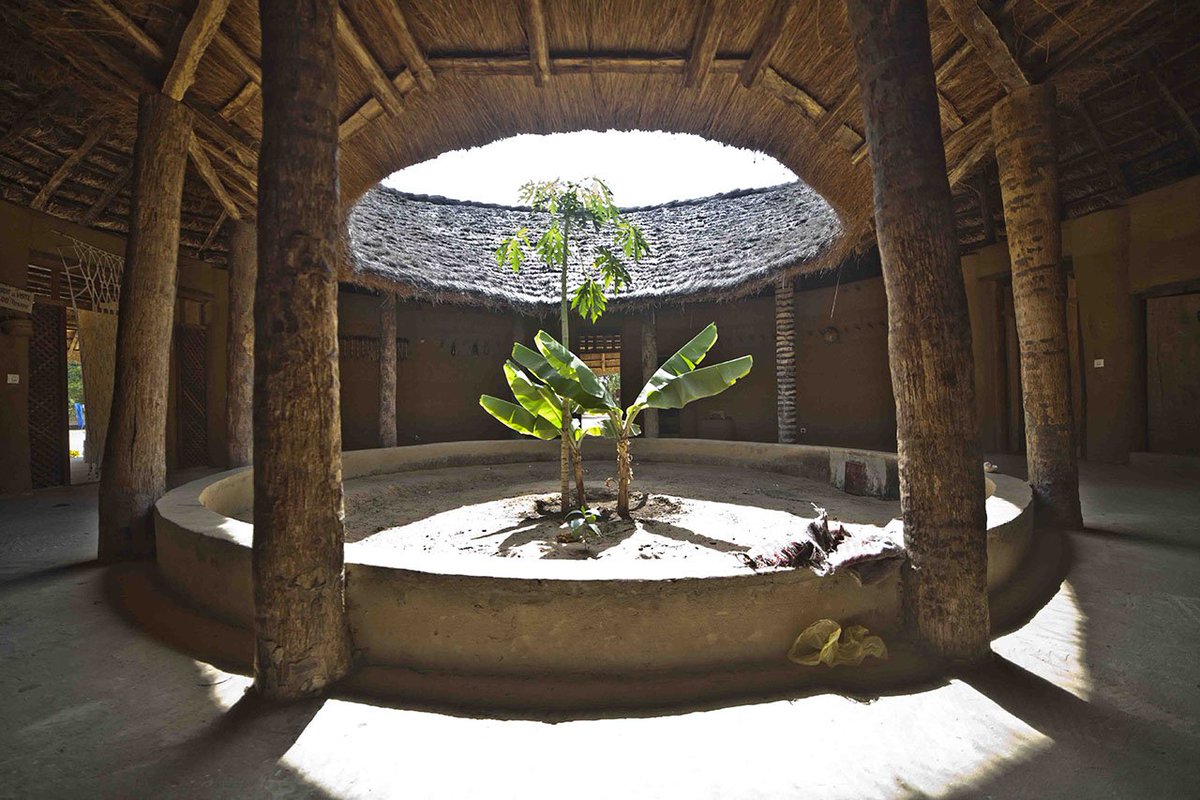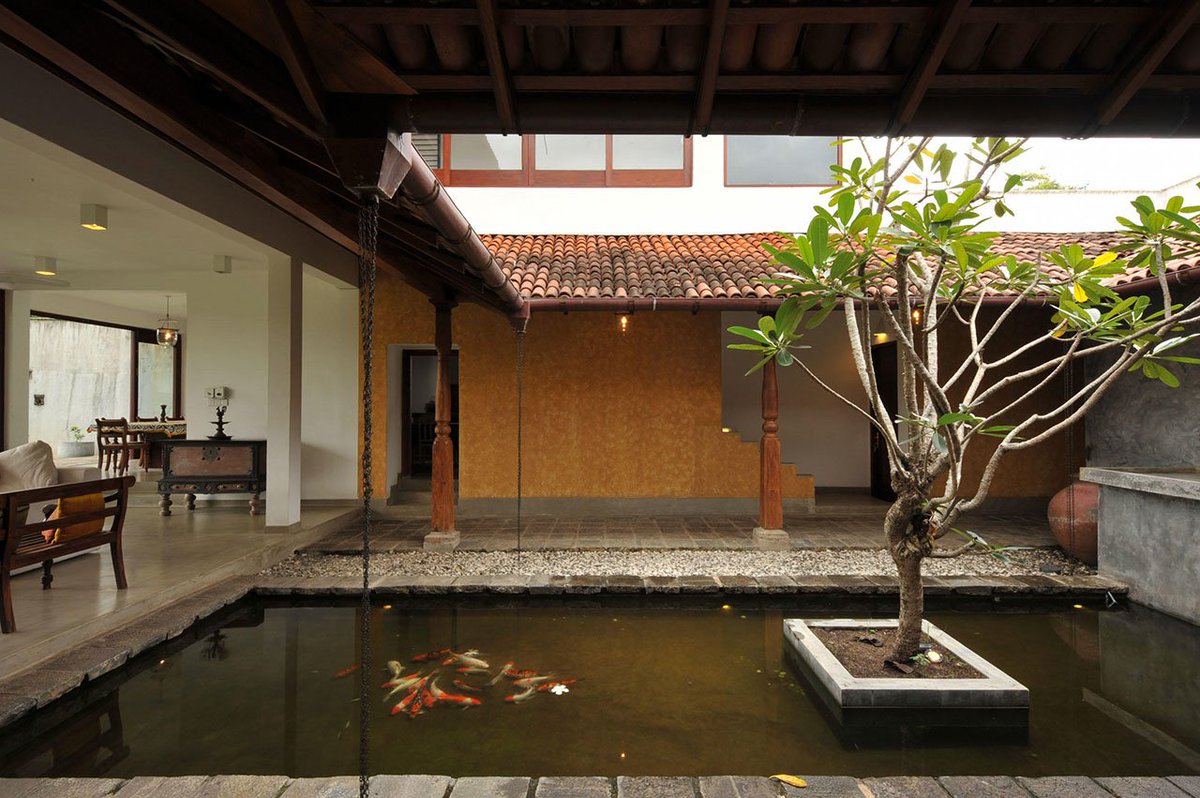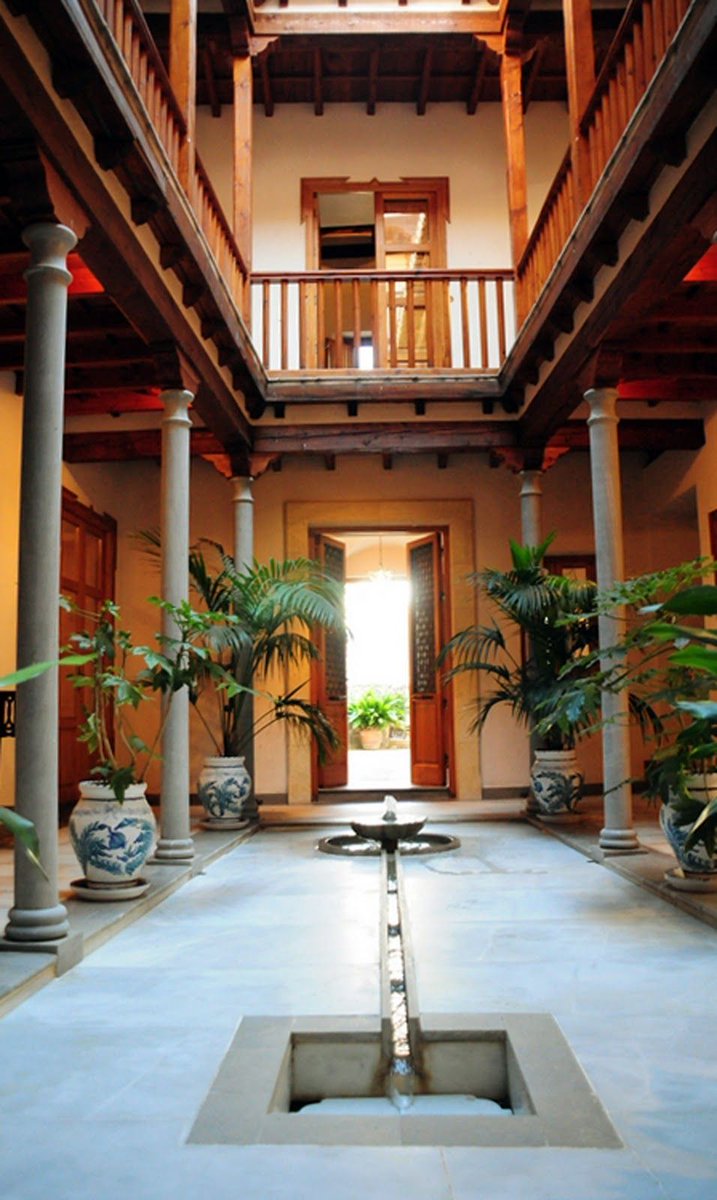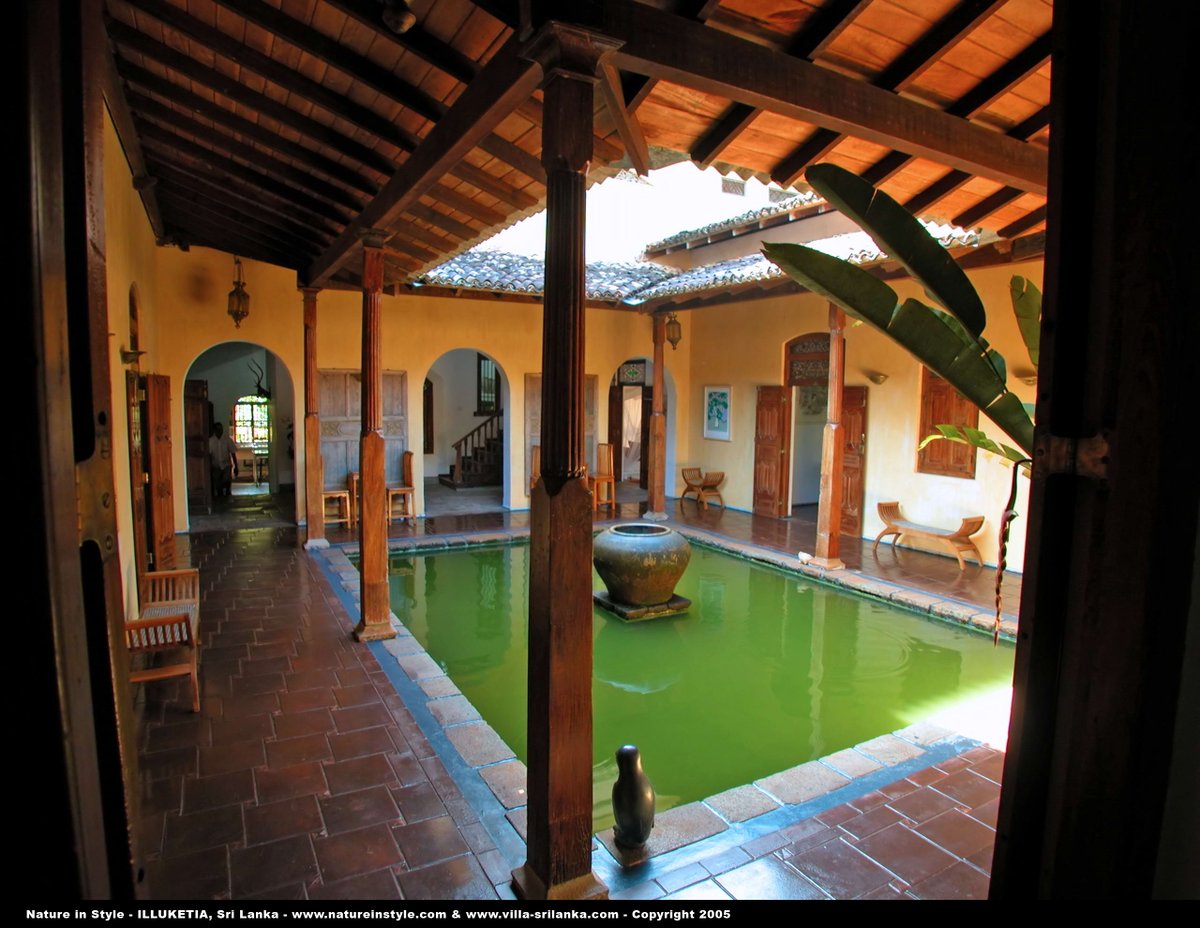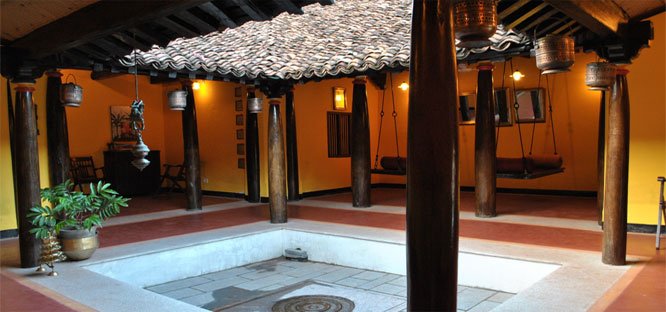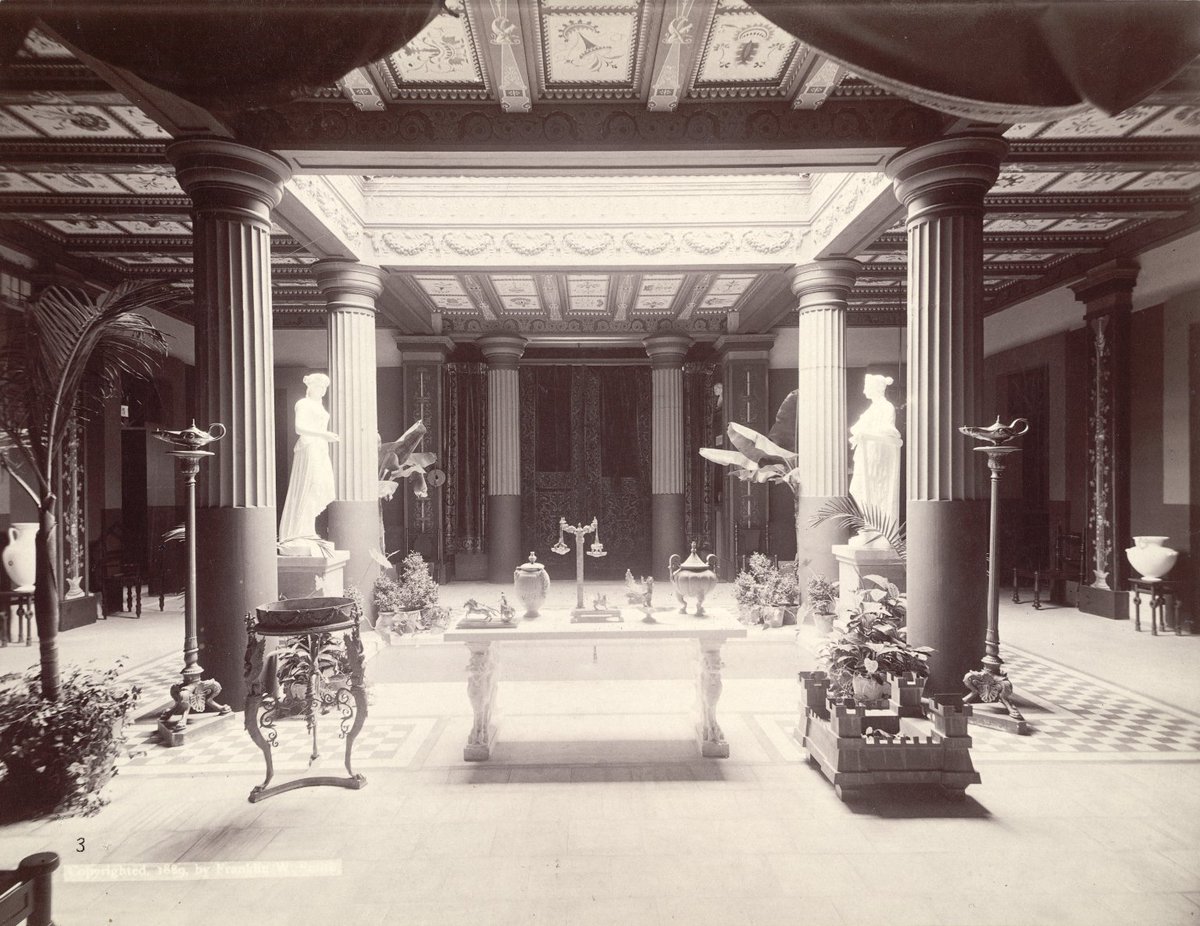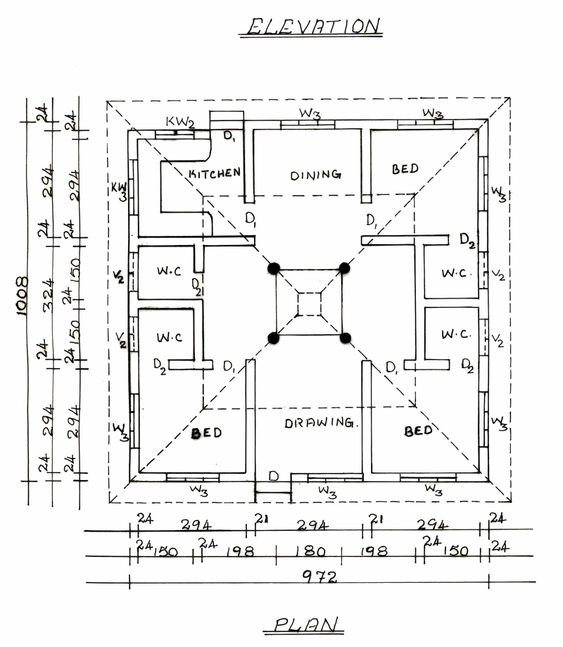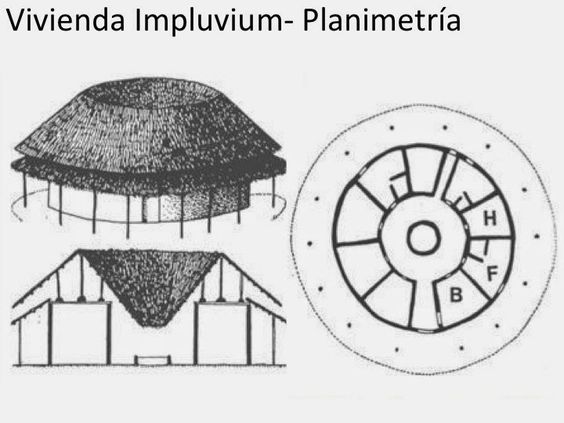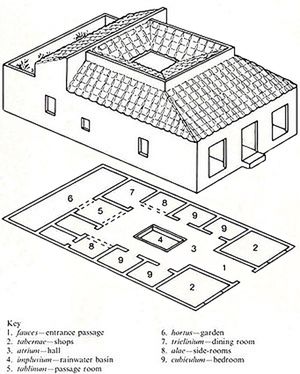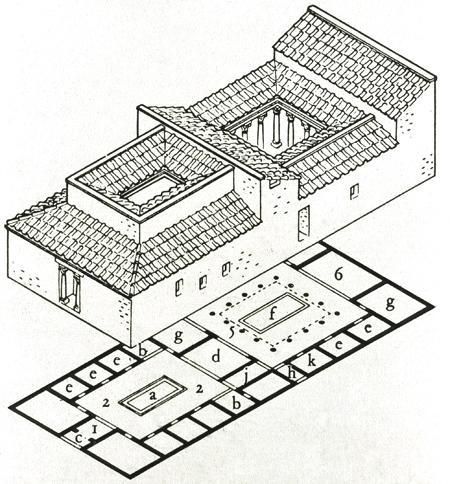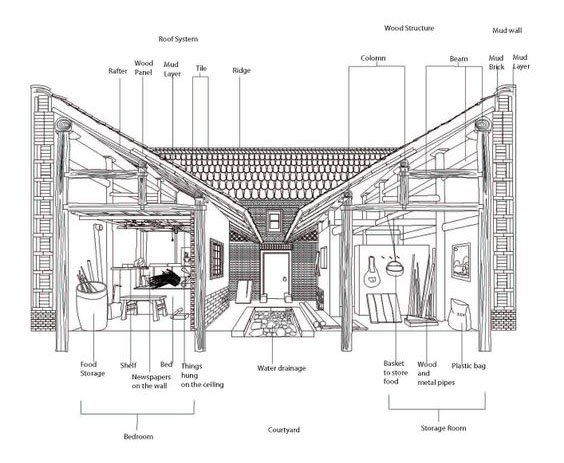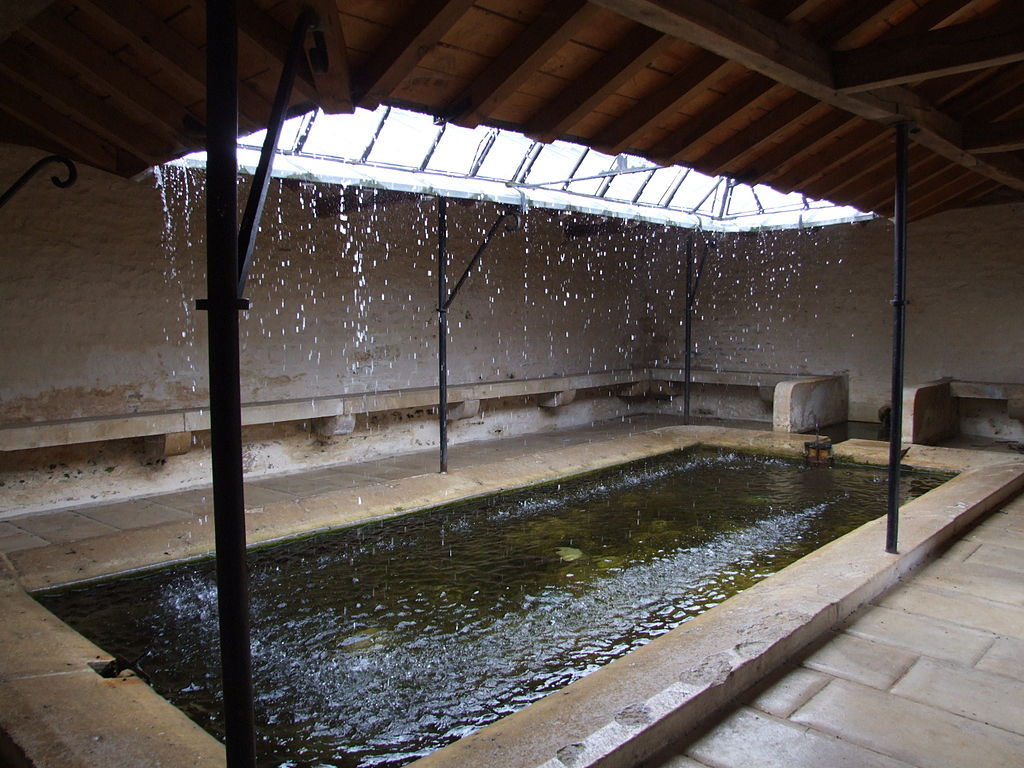The summer heat continues. Let's have a look at how the ancient Romans built themselves a cool, breezy, indoor climate and supplied themselves with almost unlimited fresh, filtered, indoor water, miles from wells or aqueducts, at the same time: the impluvium.
In dense Roman cities most houses were built around the atrium, with an impluvium, a shallow pool, in the center, and the corresponding compluvium, an opening in the pitched roof. above.
The compluvium would concentrate all rainwater into the impluvium, as well as lead valuable sunlight into the often long and windowless Roman domus. As the water in the impluvium evaporates it creates a cooler indoor climate and generates a breeze.
Underneath the impluvium were cisterns, where the household could draw fresh and continuously chilled water. The best impluvia also came with an inbuilt filtration system, as the porous bottom would allow water to filter through sand and gravel into the cistern below.
The many impluvia in the Roman city drew a substantial amount of water which would otherwise have overwhelmed the sewers and urban water run-off in storms. It also made the city far less dependent on fresh water from communal wells or aqueducts, allowing for denser populations.
The richer Roman domus would use grondaia—the predecessors of the medieval gargoyles—water sprouts that controlled and directed the rainwater into an attractive water feature. These would be built into the corbels and make the atrium a bit less messy in case of hard rain.
The implivium system is known and used by almost all hot climate countries in the world, like the famous ones in Senegal, west Africa, which uses thatch instead of roof tiles and often combines the rainwater catchment with small kitchen gardens.
In Japan, China, Sri Lanka, India etc. it was also a common way to control rainwater and create an attractive, cool, indoor courtyard at the same time. It could also be used for gardening, fish ponds, household chores etc.
And for sheer charm, it is hard to beat a beautifully kept impluvium in the central atrium of your house. These would often have been richly decorated, with statues of important house hold gods, mottoes, mosaics, paintings and even treasure chests: perfect for welcoming guests.
If we were to build more of these impluvia in hot, arid, climates, we would do both ourselves and the environment a huge favor. It could even help save places like Los Angeles from the coming water shortages, while using only sustainable, hand built, ecological resources.
Instead of going into lifelong debt to rent a plastic villa that will last you a few decades completely dependent on the grid, why not build something like this that can be repaired by anyone using mud, brick and wood, saving water and making expensive AC systems unnecessary?

 Read on Twitter
Read on Twitter